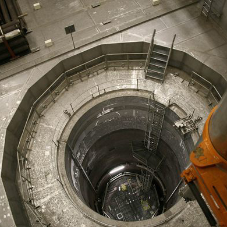Developing strong specifications is not just about describing your building product – you need to relate to other construction issues.
The various members of the Construction Project Decision Making Unit - Client, Architect, Engineer, Main Contractor and Sub-contractor - have a lot of issues and pressures to face. In addition to designing and installing the elements which will make a good quality building, they have to face the challenges presented by today’s changing marketplace. Examples of current pressures include the Skills Shortage, Sustainability and the drive for Digital. In addition, there is the constantly evolving challenge of meeting current legislation.
Construction Project Decision Making Unit
A manufacturer who can present their products within the context of this environment will make life easier for the members of the Construction Project Decision Making Unit. And by doing so will improve the chance of their products being specified and installed. Let me give you some examples.
The Skills Shortage, although an issue for the whole construction industry, it is a particular challenge for the contractor who needs skilled labour on site today. By de-skilling products, either by supplying as pre-assembled units or simplifying their design and hence making them easier to assemble correctly (push-fit plumbing for example) a manufacturer provides a benefit to the contractor who needs less skilled labour on site. Another example is the assembly process. If it can be simplified, or stages removed, then it will be easier to install. For example, bricklayers are in short supply and have the luxury of being selective about where they work. There are cases of them declining work where they are expected to install cavity wall insulation, in preference for projects where blown insulation is installed after the brickwork is complete. Think about ways your product can be used to save the contractor money, or to appeal to that scarce site labour.
Sustainability continues to be a feature of importance to many clients and tenants, requiring architects to design to BREEAM or similar. When doing this architects need to achieve ratings in 9 sectors (Management, Health & Wellbeing, Energy, Transport, Water, Materials, Waste, Land Use & Ecology, Pollution) which in turn lead to a rating which most clients will wish to be: Outstanding, Excellent or Very Good. An architect will aim to design so that a building is just into the target rating. There are also many cases of a tenant wanting a higher rating than the building was designed to, requiring the addition of extra features late in the build programme. So be aware of how your products contribute to the BREEAM rating, even if it is only in a small way. This feature alone may get your product selected and installed, it can also help to protect it from specification switching.
The Digital environment is primarily about BIM but there are other technologies which are enabled by BIM or can enhance the performance of BIM. Virtual or Augmented Reality can feed off BIM content to show what products will look like when installed. Remote monitoring of products can feed back valuable data to the building’s management system during operation. And product identification can initially confirm that the correct product was installed and subsequently confirm the product’s details giving access to maintenance information. In each case, by offering these features, it makes it easier to select and use your product.
Legislation is an ongoing challenge for the architect, and as a result of the Hackitt Review it should also become of greater concern to the contractor. There is a large volume of information they need to understand, often with conflicts between one part of the Building Regulations and another. On top of that there is usually at least one code under review. Any manufacturer who can clearly, and accurately, set out the legislation relevant to their products and explain how to meet it will be welcomed.
Think beyond the basics of your product
For a manufacturer to be effective it is necessary to think beyond the basics of your product. Identify, and understand, the features that can bring benefits to the members of the Construction Project Decision Making Unit (DMU). And if you don’t have any (unlikely) perhaps this should be a subject for new product development, or enhanced technical support. But remember to only present the relevant features and benefits to each decision maker. Sometimes one feature can even provide different benefits to the various members of the DMU. And if you want to ensure that your product is not switched-out you need to ensure that it is supported with comprehensive product specifications which detail these features.
Futher reading:
What marketers need to know when providing specification documents
Providing Effective Specification Documentation for your Construction Product
What to consider when developing technical literature for construction products?
How specifiers are influenced

Further Information
Competitive Advantage Consultancy specialises in helping building product manufacturers to be more effective at getting their products selected. Offering more than construction market research, we can work with you to inform and develop your strategy, with a range of sales and marketing tools all designed to help you effectively influence construction product selection.
Sign up to the Competitive Advantage newsletter for an overview of construction market activity as well as construction sales and marketing advice.
Related Blog Articles



crop192.png)












